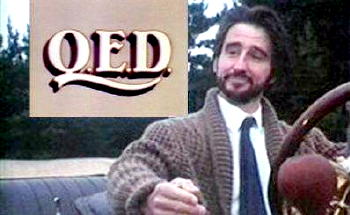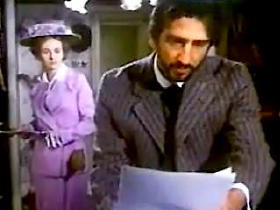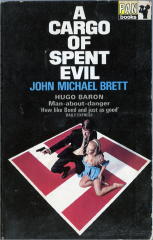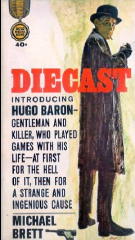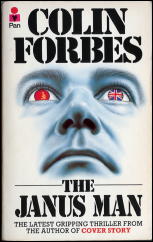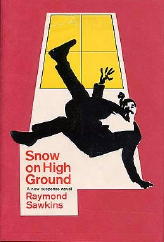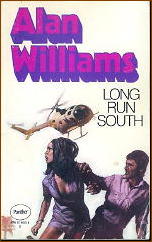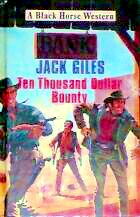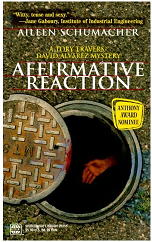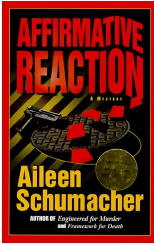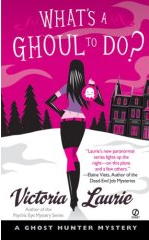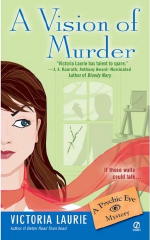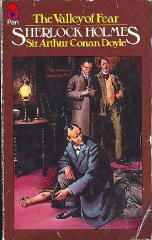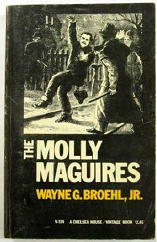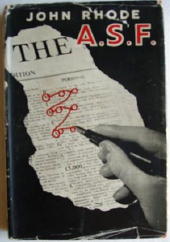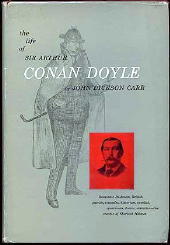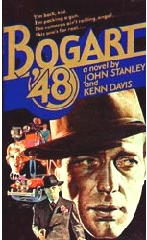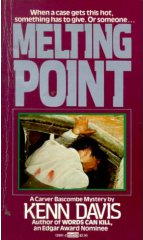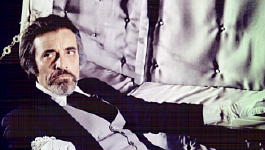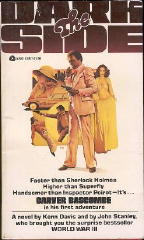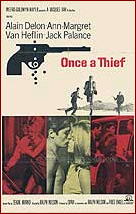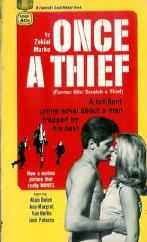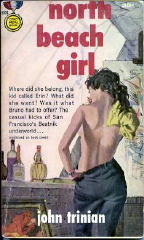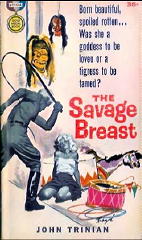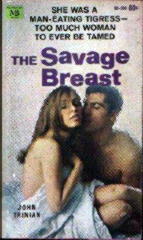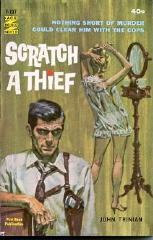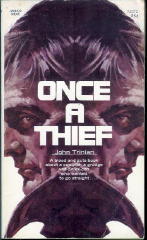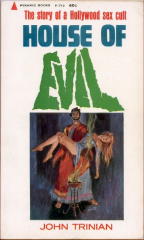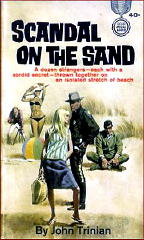Sun 25 May 2008
Death Noted: MAUREEN PETERS (1935-2008)
Posted by Steve under Authors , Bibliographies, Lists & Checklists , Crime Fiction IV , Obituaries / Deaths Noted[7] Comments
When I received word of the death of Maureen Peters from John Herrington yesterday, I emailed my daughter Sarah immediately, as she’s the historical fiction expert in the family, and I thought she’d like to know. While Maureen Peters wrote a sizable number of books included in the Revised Crime Fiction IV, by Allen J. Hubin, under her own name she was known far more for her fiction about the past, most often re-creating the lives of women born to royalty.
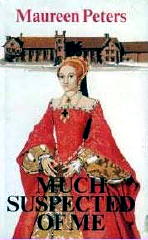
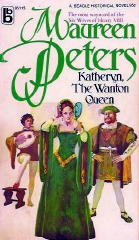
Here’s a portion of Sarah’s opening paragraphs about Maureen Peters on her blog, Reading the Past:
“Her novels, which easily number over one hundred, fall into many categories: biographical fiction on royalty (written under her own name), Gothic romances, family sagas, Mills & Boon series titles, contemporary mysteries (her Sister Joan series was written as Veronica Black), and more.”
There you have it. The secret is out. In the world of mystery fiction, Maureen Peters is far better well known as Veronica Black than she is as her own. For the rest of Sarah’s overview of her career, please follow the link above, and I hope you do.
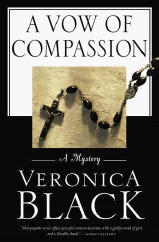
For more about Sister Joan, the contemporary nun who is the series character in many of the Veronica Black books, see this page on Philip Grosset’s website dedicated to clerical detectives:
Said Maureen Peters about Sister Joan in an interview with her that you can find online:
As Catherine Darby, Maureen Peters wrote books that were sold as Gothics, such as the 12 books in the “Falcon Saga,” but were really what Sarah calls “dark family sagas.” Or more precisely, she describes their plot lines this way: “Themes of illicit passion, family rivalry, witchcraft, revenge, and even reincarnation permeated the novels…”
BIBLIOGRAPHY. Crime Fiction only.
[Expanded and revised from her entries in CFIV; British editions only, except as noted.]
PETERS, MAUREEN (1935-2008). Pseudonyms: Veronica Black, Catherine Darby, Elizabeth Law & Judith Rothman.
Verity (Hale, 2002, hc) SC: Tansy Clark. [London; 1870s]
Vashti (Hale, 2006, hc) SC: Tansy Clark. [London; 1870s]
BLACK, VERONICA
Portrait of Sarah (n.) Hale 1969 [England]
The Wayward Madonna (n.) Hale 1970 [England]
A Footfall in the Mist (n.) Hale 1971 [England]
Master of Malcarew (n.) Hale 1971 [England]
The Enchanted Grotto (n.) Hale 1972 [England]
Fair Kilmeny (n.) Hale 1972 [England]
Moonflete (n.) Hale 1972 [England]
Minstrel’s Leap (n.) Hale 1973 [England]
The House That Hated People (n.) Hale 1974 [England]
Spin Me a Shadow (n.) Hale 1974 [England]
Echo of Margaret (n.) Hale 1978 [England]
Greengirl (n.) Hale 1979 [England]
Pilgrim of Desire (n.) Hale 1979 [England]
Flame in the Snow (n.) Hale 1980 [England]
-Lover Dark, Lady Fair (n.) Hale 1983 [England]
Hoodman Blind (n.) Hale 1984
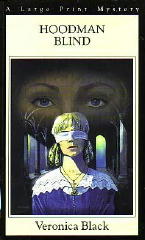
Last Seen Wearing (n.) Hale 1990 [England]
A Vow of Silence (n.) Hale 1990 [Sister Joan; England]
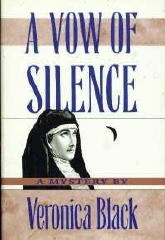
Vow of Chastity (n.) Hale 1991 [Sister Joan; England]
My Name Is Polly Winter (n.) Hale 1992 [England]
A Vow of Obedience (n.) Hale 1993 [Sister Joan; England]
A Vow of Sanctity (n.) Hale 1993 [Sister Joan; Scotland]
A Vow of Devotion (n.) Hale 1994 [Sister Joan; England]
A Vow of Penance (n.) Hale 1994 [Sister Joan; England]
A Vow of Fidelity (n.) Hale 1995 [Sister Joan; England]

A Vow of Adoration (n.) Hale 1996 [Sister Joan; England]
Vow of Poverty (n.) Hale 1996 [Sister Joan; England]
A Vow of Compassion (n.) Hale 1997 [Sister Joan; England]
Vow of Evil (n.) Hale 2004 [Sister Joan; England]
DARBY, CATHERINE [All were published first in the US as paperback originals.]
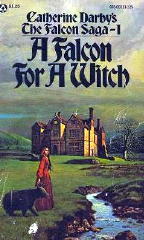
-The King’s Falcon (n.) Popular Library 1975 [Falcon Saga #2; England; 1644]
-Fortune for a Falcon (n.) Popular Library 1975 [Falcon Saga #3; England]
-Season of the Falcon (n.) Popular Library 1976 [Falcon Saga #4; England; 1774]
-Falcon Royal (n.) Popular Library 1976 [Falcon Saga #5; England]
-The Falcon Tree (n.) Popular Library 1976 [Falcon Saga #6; England; 1841]
-The Falcon and the Moon (n.) Popular Library 1976 [Falcon Saga #7; England; 1886]
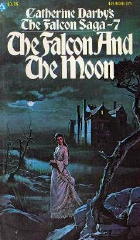
-Falcon Rising (n.) Popular Library 1976 [Falcon Saga #8; England; 1818]
-Falcon Sunset (n.) Popular Library 1976 [Falcon Saga #9; England; 1916]
Whisper Down the Moon (n.) Popular Library 1977 [Moon Chalice Quest #1; England]
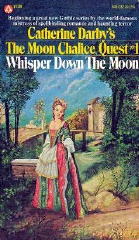
Frost on the Moon (n.) Popular Library 1977 [Moon Chalice Quest #2; England]
The Flaunting Moon (n.) Popular Library 1977 [Moon Chalice Quest #3; England; 1644]
Sing Me a Moon (n.) Popular Library 1977 [Moon Chalice Quest #4; England]
Cobweb Across the Moon (n.) Popular Library 1978 [Moon Chalice Quest #5; England]
Moon in Pisces (n.) Popular Library 1978 [Moon Chalice Quest #6; England; 1800s]
-Seed of the Falcon (n.) Popular Library 1978 [Falcon Saga #10; England]
-Falcon’s Claw (n.) Popular Library 1978 [Falcon Saga #11; England; 1399]
-Falcon to the Lure (n.) Popular Library 1978 [Falcon Saga #12; England]
LAW, ELIZABETH
ROTHMAN, JUDITH
For a complete listing of all of Maureen Peters’ fiction, see the Fantastic Fiction webpage for her.
